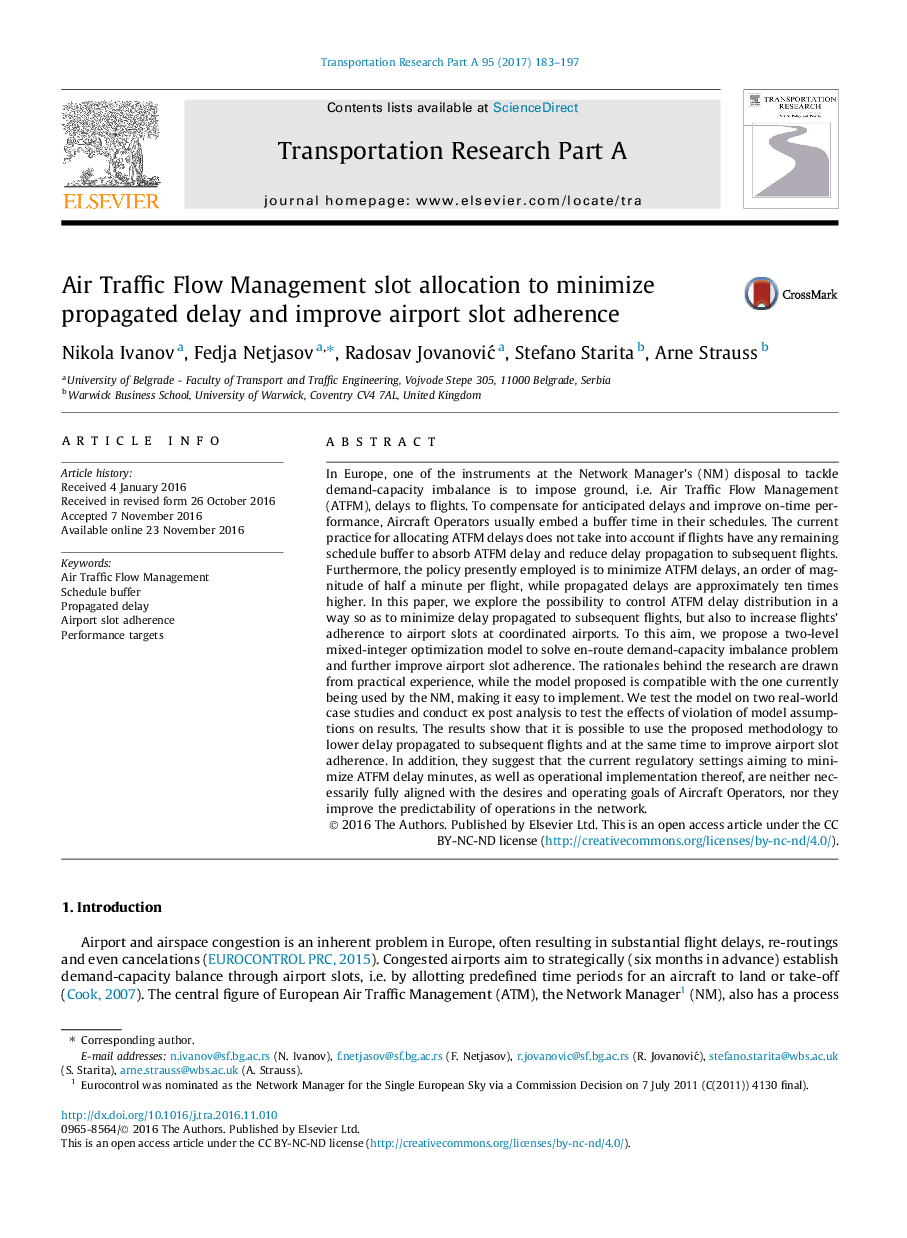| کد مقاله | کد نشریه | سال انتشار | مقاله انگلیسی | نسخه تمام متن |
|---|---|---|---|---|
| 4929077 | 1432205 | 2017 | 15 صفحه PDF | دانلود رایگان |
- A model for Air Traffic Flow Management (ATFM) slot allocation is proposed.
- At the first level model minimizes propagated delay by utilizing schedule buffers.
- At the second level model maximizes airport slot adherence of regulated flights.
- Aircraft Operators benefit from such approach in terms of propagated delay savings.
- Results challenge the current European ATFM delay minimization policy.
In Europe, one of the instruments at the Network Manager's (NM) disposal to tackle demand-capacity imbalance is to impose ground, i.e. Air Traffic Flow Management (ATFM), delays to flights. To compensate for anticipated delays and improve on-time performance, Aircraft Operators usually embed a buffer time in their schedules. The current practice for allocating ATFM delays does not take into account if flights have any remaining schedule buffer to absorb ATFM delay and reduce delay propagation to subsequent flights. Furthermore, the policy presently employed is to minimize ATFM delays, an order of magnitude of half a minute per flight, while propagated delays are approximately ten times higher. In this paper, we explore the possibility to control ATFM delay distribution in a way so as to minimize delay propagated to subsequent flights, but also to increase flights' adherence to airport slots at coordinated airports. To this aim, we propose a two-level mixed-integer optimization model to solve en-route demand-capacity imbalance problem and further improve airport slot adherence. The rationales behind the research are drawn from practical experience, while the model proposed is compatible with the one currently being used by the NM, making it easy to implement. We test the model on two real-world case studies and conduct ex post analysis to test the effects of violation of model assumptions on results. The results show that it is possible to use the proposed methodology to lower delay propagated to subsequent flights and at the same time to improve airport slot adherence. In addition, they suggest that the current regulatory settings aiming to minimize ATFM delay minutes, as well as operational implementation thereof, are neither necessarily fully aligned with the desires and operating goals of Aircraft Operators, nor they improve the predictability of operations in the network.
Journal: Transportation Research Part A: Policy and Practice - Volume 95, January 2017, Pages 183-197
